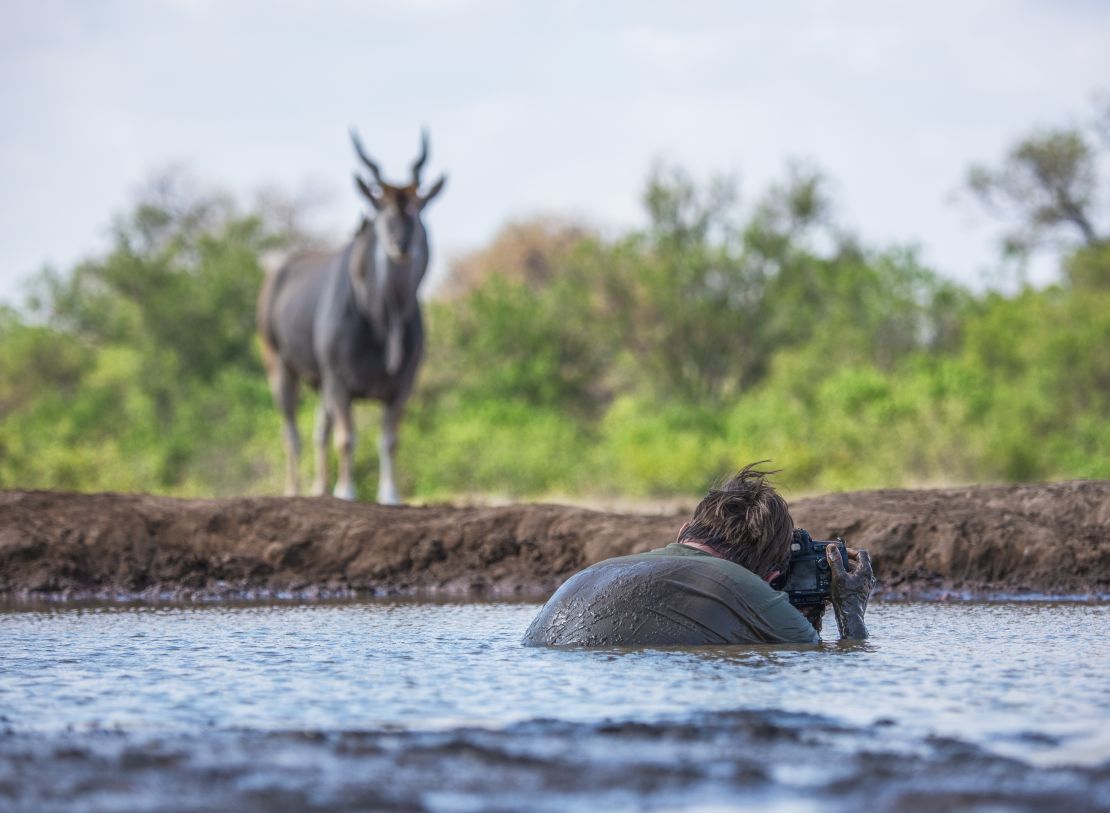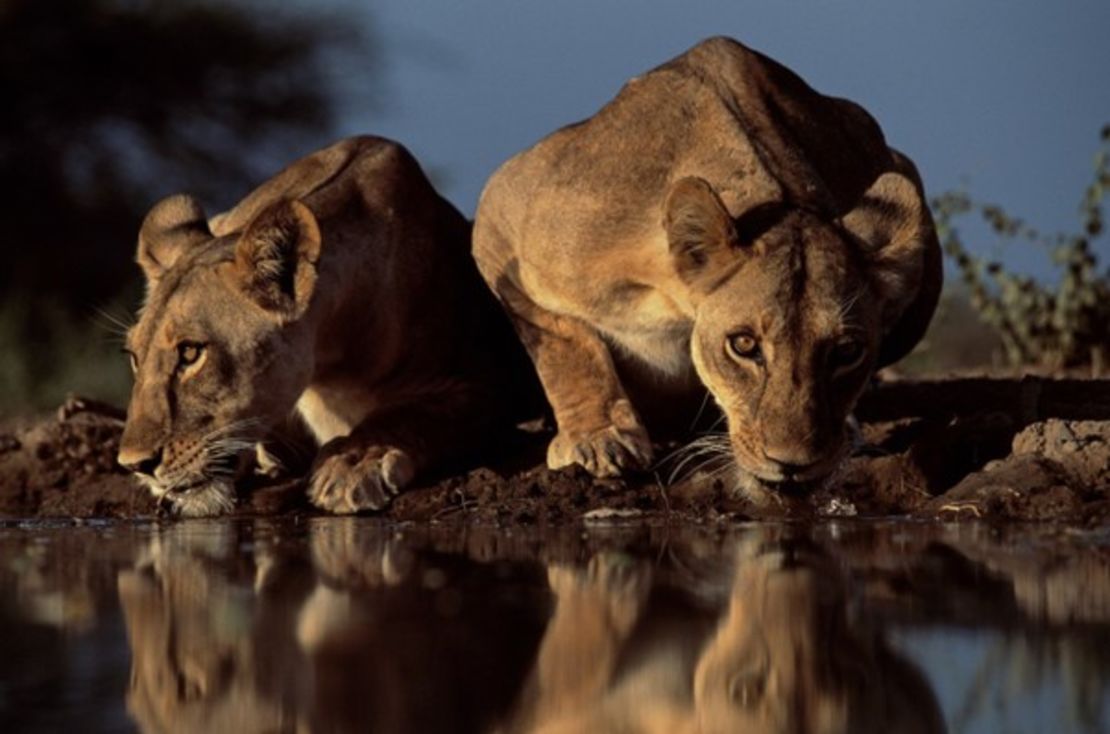Award-winning photographer on life spent in wild I’m amazed I lived to tell tale
CNN carries an article about the wildlife who has spent the past two decades photographing lions, rhinos and elephants, Caliber.Az reprints the article.
Playing safe is not an option for wildlife photographer Greg du Toit. The South African has spent the past two decades photographing lions, rhinos and elephants, embracing more adventure and danger than most people will experience in a lifetime.
Unlike many in his field, du Toit says he doesn’t use bait, camera traps, digital manipulation, captive bred animals or drones. All he needs is his Nikon camera, a chance to get close to his subject, the right natural light, and a lot of patience. It’s a combination that has won him international accolades, including Wildlife Photographer of the Year in 2013, and in April, the wildlife category at the Fine Art Photography Awards, for “The Enchanted Forest,” a series showing elephants in a forest on the border of Zambia and Zimbabwe.
Speaking with CNN by phone, on the way to Tanzania for his next project, he shared his approach to fine art photography, what the past two decades have taught him and why taking pictures in Africa feels different to anywhere else in the world.
The conversation has been lightly edited and condensed for clarity.
CNN: What are the most important aspects to you when you’re taking a picture in the wild?
Greg du Toit: I learned to photograph on film, so I like my work to resemble a moment that I experienced from behind my camera, sort of a moment in nature. So I never do multiple exposures. The fundamental thing remains the same as it always was since the very first time I picked up a camera, and that is light. I really like to work with beautiful quality light, golden or blue even sometimes. And then beyond that, sort of adding a touch of mood or a touch of mystery.
CNN: How do you achieve mood in your pictures?
Du Toit: I spend a lot of time in nature. I get up super early, for the good light, I stay up late and then, like for this Enchanted Forest series, I just found places in the forest that work right, where there was a beautiful window or there was a beautiful light coming through, and I just wait for an elephant to show up. So that portfolio, it’s literally five photographs and it took me five years. From a business point of view, that makes absolutely no financial sense whatsoever, but I’m just an artist. For me, it’s all about just creating the art even if it comes at a great expense in terms of investing time. I do just love being out there as well, so it’s not like a major sacrifice.

CNN: In the age of social media, I’d expect photographers to be constantly posting series after series instead of really taking their time…
Du Toit: I had always focused on only quality. I used to get, like, six photos a year and I’d be happy with that. Then social media came along and especially Instagram, and it was like, ‘no, you need at least an image a day,’ or more than that even, and I just couldn’t do that.
I kind of gave up on social media, which sort of felt like I was committing career suicide when I did that. But I’m just sticking to my guns. I can’t sort of adapt and just produce quantity because the way I work just does not allow for that.
CNN: What are you hoping to convey with your wildlife photography
Du Toit: I just want to tell people that it’s not too late, especially here in Africa. We still have such incredible wildernesses, full of these amazing animals, and that’s why when I photograph, I really try and focus on not just the animal itself, but on the environment in which that animal lives. That winning series of elephants is exactly that. There are still these incredibly wild places that are still full of incredible animals and it’s not too late for us to enjoy them, to preserve and conserve them.
CNN: You mainly focus on taking photographs in Africa. What would you say that makes wildlife photography in Africa different from other parts of the world?

Du Toit: I’ve been on trips and the other parts of the world are wonderful. For example, I’ve been up to the Arctic to photograph polar bears, and I’ve been to India for tigers and things like that. But every time I’ve done that, I’ve just felt that those places lacked this energy that Africa has. It’s like a wild energy … there’s that feeling of mystery and intrigue, the feeling that this place is so big and so vast and a little bit dangerous, and I love that.
Du Toit famously once spent 16 months photographing lions at a waterhole in Kenya’s South Rift Valley. For the first 13 months he sat in a hole in the ground next to the water hole, followed by three months laying in the water, in an effort to get the perfect shot.
CNN: When you took your iconic pictures of the lions, you were there sitting in the water for months, you caught malaria. Is there a kind of contradiction between the beauty of the end product, and the reality of the work that goes into getting the image?
Du Toit: Yeah, the photographs you see are just polished and they just look beautiful, but the reality of getting those photographs is very different. Very often in these really wild places in Africa, you get gypsy flies and so you end up being bit by these flies and it’s really painful, so between shots you’re kind of swatting flies. It’s hot and sweaty, so it’s not glamorous work. Also, your cameras get dirty and [Africa] it’s a very sort of dusty place. But I really just love the end product. Getting a good photograph is the sort of best thing I can do. It’s the best feeling, and I really do just love nature. I’d rather be there than anywhere else.
CNN: One thing that many people don’t realize is that, apart from the picture of the two lions, there is another one with a bunch of lions just standing there…
Du Toit: That’s right, there were others watching me. I sort of unpacked this in my book [“Wilderness Dreaming,” published in 2022], but I’d only thought about getting the shots, I didn’t think beyond that.
So when those two lionesses finish drinking, they just lay on the edge watching me and then it started to get dark. So I slowly started trying to move to the side of the waterhole (…) I’m moving, I’m getting to the edge of the water. The water’s getting shallower. So more and more of my body is becoming exposed and these lionesses are getting more and more interested…
I’m quite amazed I lived to tell the tale. Eventually I managed to get to the edge of the water hole, and I just jumped up and ran off.
CNN : You don’t use camera traps, digital manipulation or captive-bred animals. Why is that important to you?
Du Toit: I want to photograph animals in their wild habitats, doing what they naturally do. For me, it’s all about wildlife… It’s all about the subject and the subject’s environment, and then it’s about light, and really using good quality light because that for me is what brings that kind of mystery, and then just working with good angles. I love good backgrounds as well.
CNN: Do you have any particular tricks for capturing animals’ natural behaviour without disturbing them?
Du Toit: Wild animals know the shape of a human being and I don’t want to scare or intimidate my subjects; I want them to just be doing what they would do naturally. So I’ve learned ways to conceal the human form, and one of the simplest ways is to photograph from a vehicle. I can spend 10, 12 hours a day in a car, so well over 50,000 hours a year in a car. The other thing I do, which I did with the lions, I dug a hole in the ground, so you sit in the hole and then you have a roof over you, and then you photograph from there.
CNN: What is your next photography project?
Du Toit: I’m trying to create a body of work and then go to Ngorongoro crater [in northeastern Tanzania] because it’s one of those places in Africa that’s glossed over. It’s the most incredible place. It’s an extinct volcano and it’s nature’s own game reserve. It’s kind of like Jurassic Park. I’m going to be spending a week there now, which is fun.








